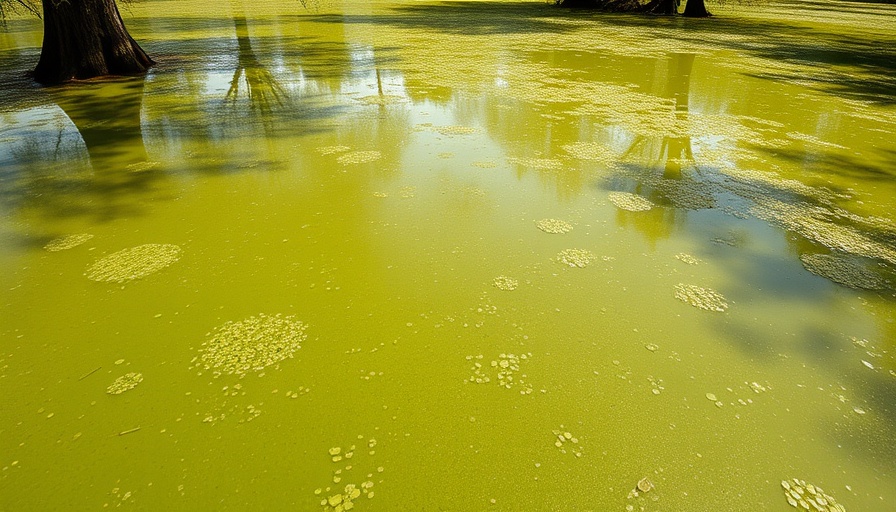
Alarming Health Risks Spark Caution at Lake Norman
Recent advisories from Mecklenburg County officials have put residents on high alert regarding safety at Lake Norman. Following an alarming detection of a harmful algal bloom (HAB) in a specific cove, officials have imposed a no-swim advisory. The bloom, identified as cyanobacteria, presents significant health risks as toxins may lead to serious illnesses in both humans and animals. Environmental factors, particularly heavy rainfall, are believed to have contributed to the rapid growth of the algae.
Understanding Toxic Algae and Its Dangers
Cyanobacteria, often surfacing in warm water conditions, can create beautiful but hazardous blue-green slicks that may appear inviting to swimmers and leisure enthusiasts. However, the reality is quite severe; exposure can result in skin irritation, gastrointestinal issues, and even liver damage. Health experts particularly caution against exposure for pets and young children, urging parents to ensure their loved ones stay clear of discolored waters and foam. The potential consequences remind us all of nature’s unpredictability.
What Residents Need to Know
Residents thriving in and around Charlotte should adhere to safety protocols in light of this advisory. The Charlotte-Mecklenburg Storm Water Services recommends avoiding all recreational activities in the affected cove, including swimming, boating, and fishing. With the advisory set to remain in place pending further testing results, it’s critical for locals to stay informed on updates regarding the water's safety. Utilizing resources like the algal bloom map, which outlines affected areas, can help residents navigate their summer plans safely.
Impact on Local Community and Recreation
Lake Norman serves as a popular destination for local families and adventurers alike, often hosting weekend picnics and water sports. With the cove now impacted, the need for proactive measures is paramount. Many families find themselves reshaping their weekend plans, seeking alternative venues or activities. Community events such as watersports and family outings to the lake are thus affected, leading to significant economic implications. Local businesses, particularly those dependent on watercraft rentals and retail sales near the lake, may face a downturn.
A Call to Togetherness: Navigating Through Adversity
Community resilience comes into play as residents navigate through this environmental challenge. Groups exploring nature conservation and water safety awareness may begin coordinating efforts in raising donations, organizing clean-up events, and educating the public on ecological preservation. These collaborative actions can transform a concerning situation into an opportunity for community engagement, fostering a stronger bond among residents faced with adversity.
What's Next for Lake Norman?
As concerns over toxic algae persist, questions arise regarding future water quality and measures that local officials might implement to prevent such occurrences. The seasonal patterns of rainfall, exacerbated by climate change, could play a role in regular algal blooms. Residents can remain engaged by advocating for sustainable practices within the community, while also holding authorities accountable for timely updates and longer-term solutions to safeguard Lake Norman’s biodiversity.
This current situation not only emphasizes the importance of vigilance in our recreational activities but also encourages an essential dialogue on maintaining the health of our shared environments. Let’s hold on to our love for Lake Norman while prioritizing safety and community engagement as we navigate through these challenging waters. Together, we can support one another and plan for a healthier future.
 Add Row
Add Row  Add
Add 




Write A Comment